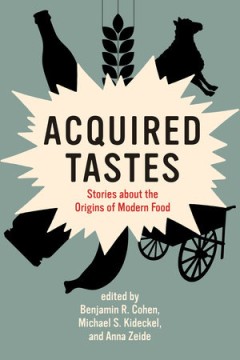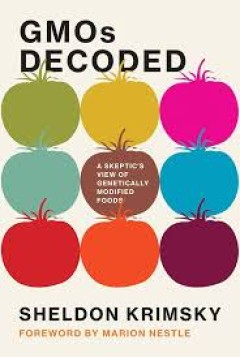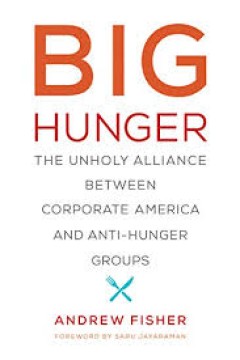Filter by

Acquired tastes :stories about the origins of modern food
"The stories in this collection open a window onto those new categories in the making. Taken together, they call for new approaches to the history of global food, and using this history to think about our future"--OCLC-licensed vendor bibliographic record.
- Edition
- -
- ISBN/ISSN
- 0262366541
- Collation
- 1 online resource.
- Series Title
- -
- Call Number
- -

Feeding The Other :whiteness, privilege, and neoliberal stigma in food pantries
How food pantries stigmatize their clients through a discourse that emphasizes hard work, self help, and economic productivity rather than food justice and equity. The United States has one of the highest rates of hunger and food insecurity in the industrialized world, with poor households, single parents, and communities of color disproportionately affected. Food pantries--run by charitable an…
- Edition
- -
- ISBN/ISSN
- 9780262352789
- Collation
- 1 online resource (312 pages).
- Series Title
- -
- Call Number
- -

Cultivating Food Justice: Race, Class, and Sustainability
Documents how racial and social inequalities are built into our food system, and how communities are creating environmentally sustainable and socially just alternatives.OCLC-licensed vendor bibliographic record.
- Edition
- -
- ISBN/ISSN
- 9780262300216
- Collation
- 1 online resource (xiv, 389 pages).
- Series Title
- -
- Call Number
- -

GMOs decoded a skeptic's view of genetically modified foods
The debate over genetically modified organisms: health and safety concerns, environmental impact, and scientific opinions. Since they were introduced to the market in the late 1990s, GMOs (genetically modified organisms, including genetically modified crops), have been subject to a barrage of criticism. Agriculture has welcomed this new technology, but public opposition has been loud and scient…
- Edition
- -
- ISBN/ISSN
- 9780262350747
- Collation
- 1 online resource (xxii, 191 pages) :illustrations
- Series Title
- -
- Call Number
- -

Big Hunger: The Unholy Alliance between Corporate America and Anti-Hunger Groups
How to focus anti-hunger efforts not on charity but on the root causes of food insecurity, improving public health, and reducing income inequality.OCLC-licensed vendor bibliographic record.
- Edition
- -
- ISBN/ISSN
- 9780262339513
- Collation
- 1 online resource (xvi, 343 pages).
- Series Title
- -
- Call Number
- -

Japan's Dietary Transition and Its Impacts
An examination of the transformation of the Japanese diet from subsistence to abundance and an assessment of the consequences for health, longevity, and the environment.OCLC-licensed vendor bibliographic record.
- Edition
- -
- ISBN/ISSN
- 9780262305389
- Collation
- 1 online resource (xii, 229 pages) :illustrations.
- Series Title
- -
- Call Number
- -

What's the Beef?: The Contested Governance of European Food Safety
A series of food-related crises--most notably mad cow disease in Britain, farmer protests in France against American hormone-treated beef, and the European Union's banning of genetically modified food--has turned the regulation of food safety in Europe into a crucible for issues of institutional trust, legitimacy, and effectiveness. What's the Beef? examines European food safety regulation at t…
- Edition
- -
- ISBN/ISSN
- 9780262267182
- Collation
- 1 online resource (viii, 389 pages) :illustrations.
- Series Title
- -
- Call Number
- -

The anthropocene cookbook :recipes and opportunities for future catastrophes
"The Anthropocene Cookbook is by far the most comprehensive collection of ideas about future food from the perspective of art, design, and science. The book is unique in the way it connects food, art, thinking, and science. It talks to the new generation of aesthetically aware environmentalists. It promotes ecological thinking from a radically different perspective: what happens if we embrace t…
- Edition
- -
- ISBN/ISSN
- 9780262371643
- Collation
- 1 online resource
- Series Title
- -
- Call Number
- -

Food
A consumer's guide to the food system, from local to global: our part as citizens in the interconnected networks, institutions, and organizations that enable our food choices. Everybody eats. We may even consider ourselves experts on the topic, or at least Instagram experts. But are we aware that the shrimp in our freezer may be farmed and frozen in Vietnam, the grapes in our fruit bowl shipped…
- Edition
- -
- ISBN/ISSN
- 9780262353779
- Collation
- 1 online resource (232 pages).
- Series Title
- -
- Call Number
- -

Eat, cook, grow :mixing human-computer interactions with human-food interacti…
"Our contemporary concerns about food range from food security to agricultural sustainability to getting dinner on the table for family and friends. This book investigates food issues as they intersect with participatory Internet culture--blogs, wikis, online photo- and video-sharing platforms, and social networks--in efforts to bring about a healthy, socially inclusive, and sustainable food fu…
- Edition
- -
- ISBN/ISSN
- 9780262026857
- Collation
- 1 online resource (x, 303 pages) :illustrations
- Series Title
- -
- Call Number
- -
 Computer Science, Information & General Works
Computer Science, Information & General Works  Philosophy & Psychology
Philosophy & Psychology  Religion
Religion  Social Sciences
Social Sciences  Language
Language  Pure Science
Pure Science  Applied Sciences
Applied Sciences  Art & Recreation
Art & Recreation  Literature
Literature  History & Geography
History & Geography